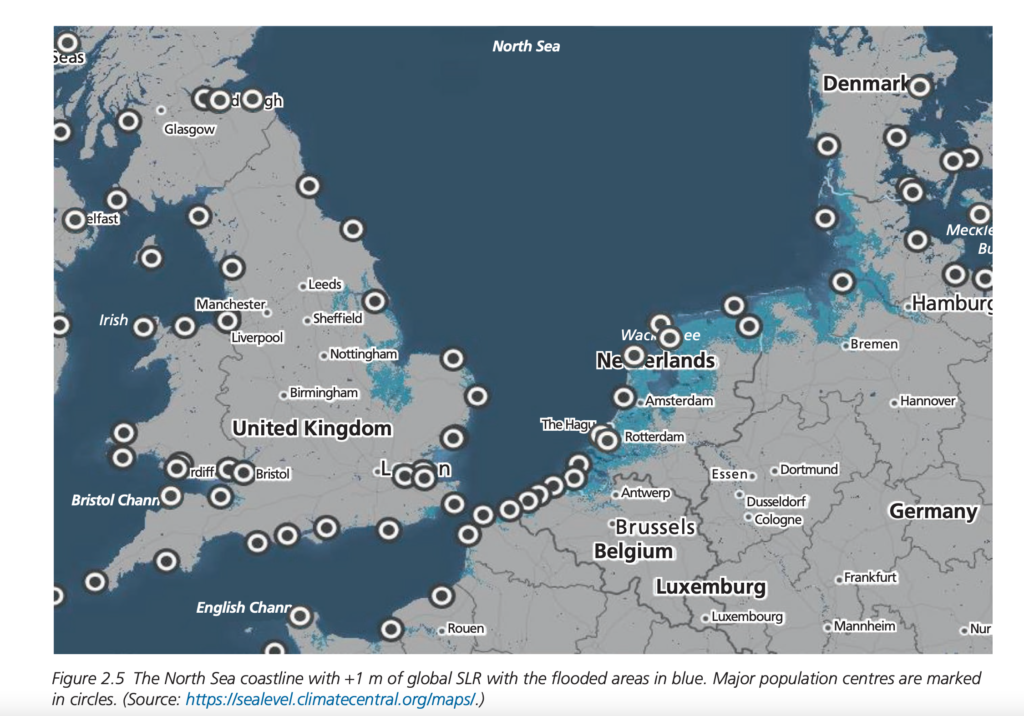Bethke, I., Wang, Y., Counillon, F., Keenlyside, N., Kimmritz, M., Fransner, F., Samuelsen, A., Langehaug, H., Svendsen, L., Chiu, P.-G., Passos, L., Bentsen, M., Guo, C., Gupta, A., Tjiputra, J., Kirkevåg, A., Olivié, D., Seland, Ø., Solsvik Vågane, J., Fan, Y., Eldevik, T. 2021: NorCPM1 and its contribution to CMIP6 DCPP. Geosci Model Dev. https://doi.org/10.5194/gmd-14-7073-2021 .
For an easy-to-understand overview, we recommend starting with this neat article written by the Climate Futures team, a project connected to BCPU: “New Study: Decadal Climate Forecasts From The Norwegian Climate Prediction Model” (les heller på norsk).
Summary: The Norwegian Climate Prediction Model version 1 (NorCPM1) is a new research tool for performing climate reanalyses and seasonal-to-decadal climate predictions. It combines the Norwegian Earth System Model version 1 (NorESM1) – which features interactive aerosol–cloud schemes and an isopycnic-coordinate ocean component with biogeochemistry – with anomaly assimilation of sea surface temperature (SST) and -profile observations using the ensemble Kalman filter (EnKF).
We describe the Earth system component and the data assimilation (DA) scheme, highlighting implementation of new forcings, bug fixes, retuning and DA innovations. Notably, NorCPM1 uses two anomaly assimilation variants to assess the impact of sea ice initialization and climatological reference period: the first (i1) uses a 1980–2010 reference climatology for computing anomalies and the DA only updates the physical ocean state; the second (i2) uses a 1950–2010 reference climatology and additionally updates the sea ice state via strongly coupled DA of ocean observations.
We assess the baseline, reanalysis and prediction performance with output contributed to the Decadal Climate Prediction Project (DCPP) as part of the sixth Coupled Model Intercomparison Project (CMIP6). The NorESM1 simulations exhibit a moderate historical global surface temperature evolution and tropical climate variability characteristics that compare favourably with observations. The climate biases of NorESM1 using CMIP6 external forcings are comparable to, or slightly larger than those of, the original NorESM1 CMIP5 model, with positive biases in Atlantic meridional overturning circulation (AMOC) strength and Arctic sea ice thickness, too-cold subtropical oceans and northern continents, and a too-warm North Atlantic and Southern Ocean. The biases in the assimilation experiments are mostly unchanged, except for a reduced sea ice thickness bias in i2 caused by the assimilation update of sea ice, generally confirming that the anomaly assimilation synchronizes variability without changing the climatology. The i1 and i2 reanalysis/hindcast products overall show comparable performance. The benefits of DA-assisted initialization are seen globally in the first year of the prediction over a range of variables, also in the atmosphere and over land. External forcings are the primary source of multiyear skills, while added benefit from initialization is demonstrated for the subpolar North Atlantic (SPNA) and its extension to the Arctic, and also for temperature over land if the forced signal is removed. Both products show limited success in constraining and predicting unforced surface ocean biogeochemistry variability. However, observational uncertainties and short temporal coverage make biogeochemistry evaluation uncertain, and potential predictability is found to be high. For physical climate prediction, i2 performs marginally better than i1 for a range of variables, especially in the SPNA and in the vicinity of sea ice, with notably improved sea level variability of the Southern Ocean. Despite similar skills, i1 and i2 feature very different drift behaviours, mainly due to their use of different climatologies in DA; i2 exhibits an anomalously strong AMOC that leads to forecast drift with unrealistic warming in the SPNA, whereas i1 exhibits a weaker AMOC that leads to unrealistic cooling. In polar regions, the reduction in climatological ice thickness in i2 causes additional forecast drift as the ice grows back. Posteriori lead-dependent drift correction removes most hindcast differences; applications should therefore benefit from combining the two products.
The results confirm that the large-scale ocean circulation exerts strong control on North Atlantic temperature variability, implying predictive potential from better synchronization of circulation variability. Future development will therefore focus on improving the representation of mean state and variability of AMOC and its initialization, in addition to upgrades of the atmospheric component. Other efforts will be directed to refining the anomaly assimilation scheme – to better separate internal and forced signals, to include land and atmosphere initialization and new observational types – and improving biogeochemistry prediction capability. Combined with other systems, NorCPM1 may already contribute to skilful multiyear climate prediction that benefits society.
Link to publication. You are most welcome to contact us or the corresponding author(s) directly, if you have questions.



